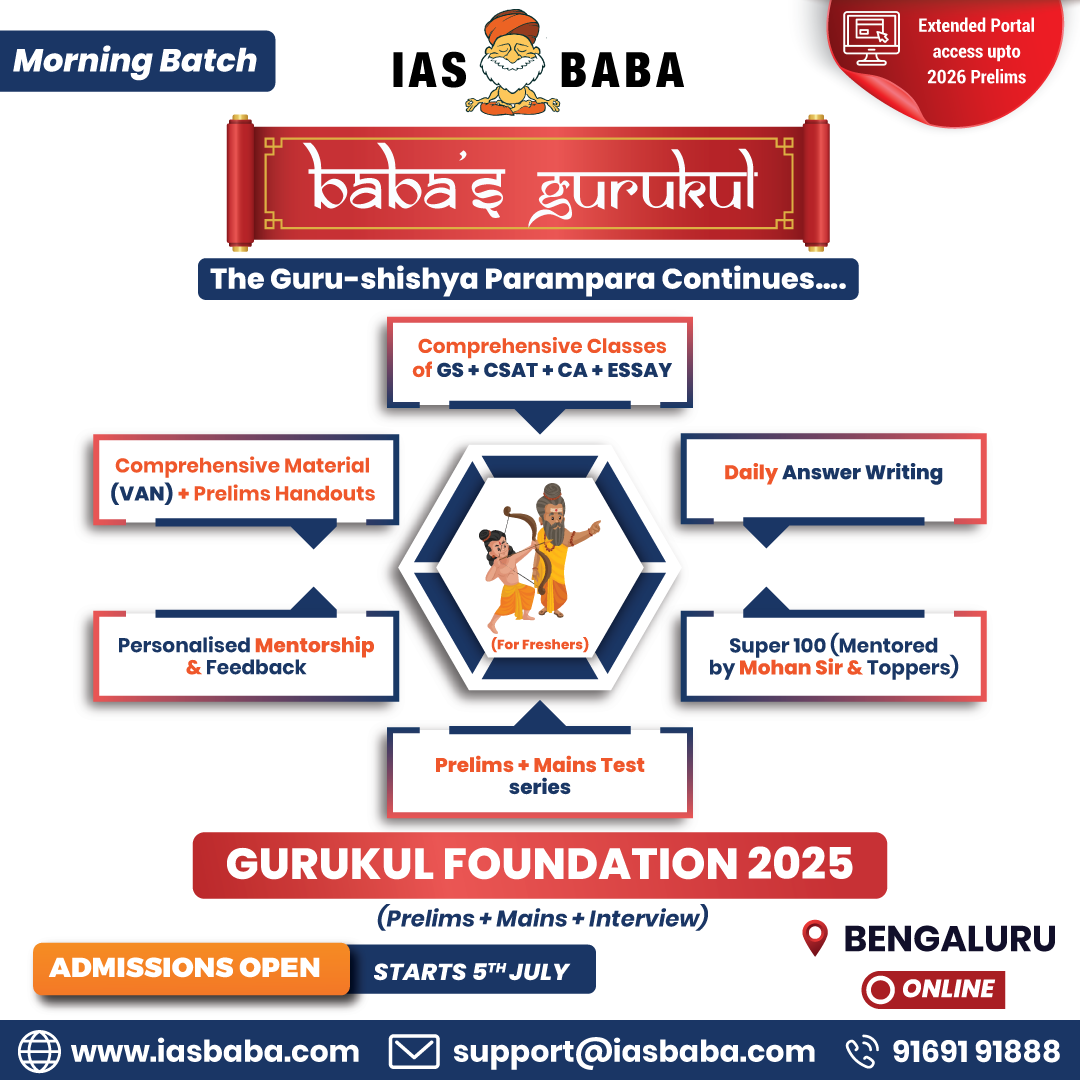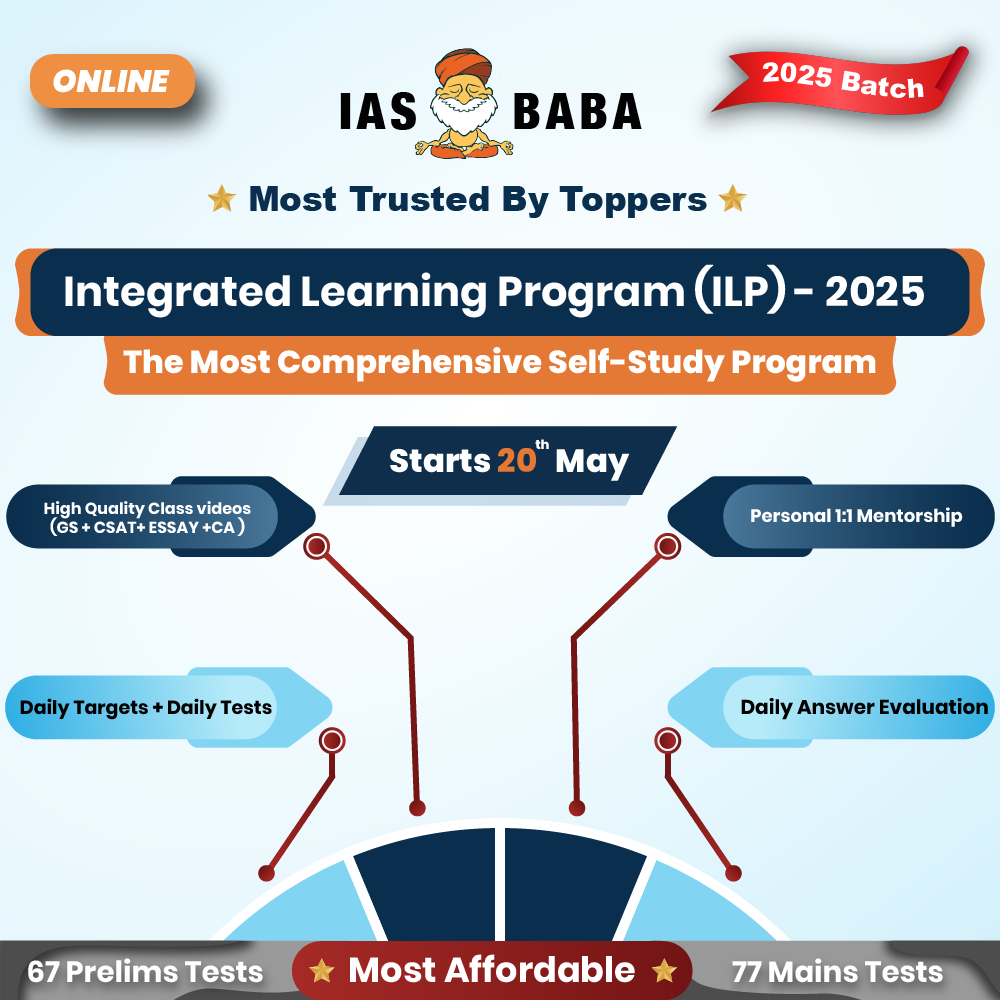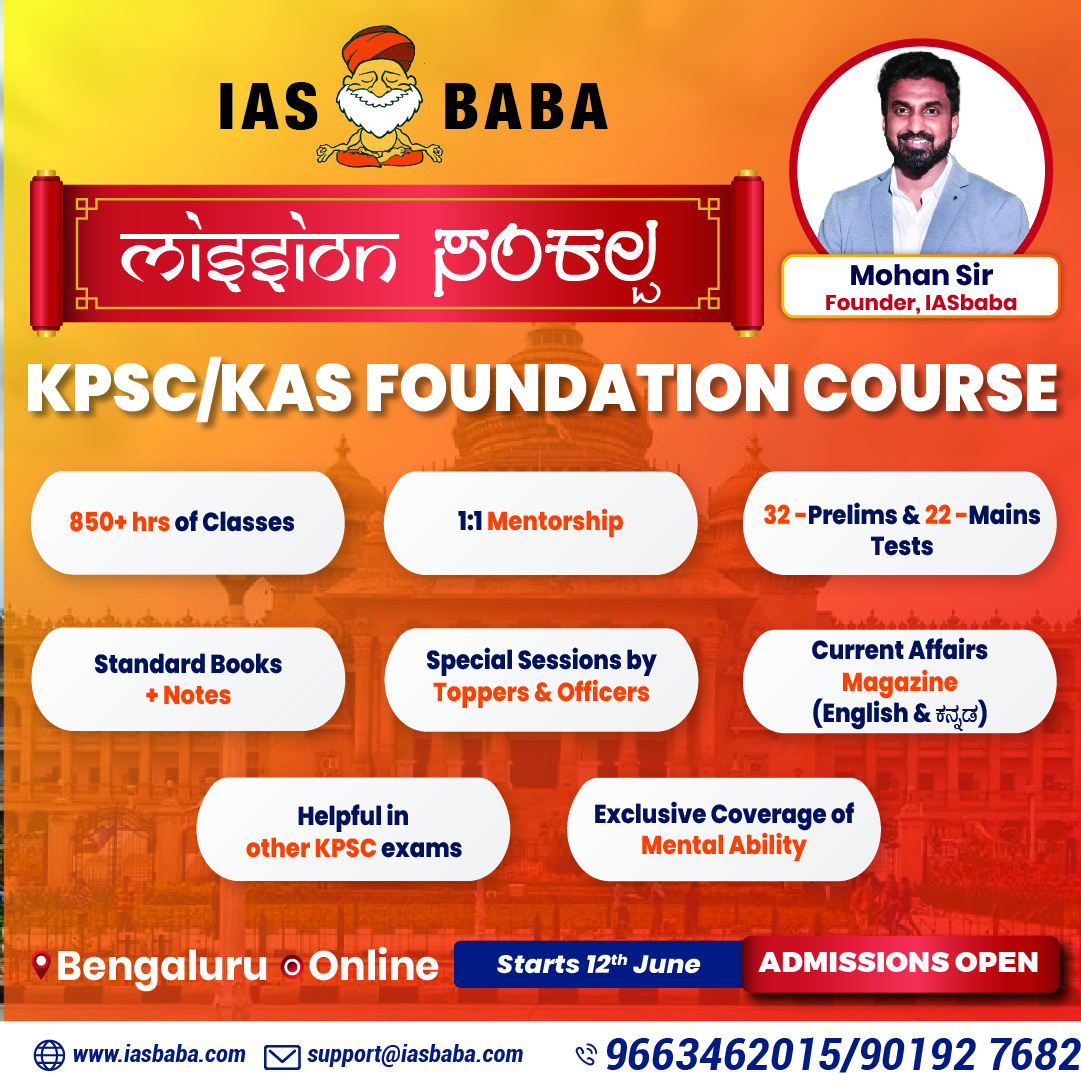Question Compilation, TLP-UPSC Mains Answer Writing
For Previous TLP (ARCHIVES) – CLICK HERE
SYNOPSIS [15th OCTOBER,2020] Day 4: IASbaba’s TLP (Phase 2): UPSC Mains Answer Writing (General Studies)
1. Despite failing to achieve its stated objectives, the Non-Cooperation Movement was a landmark in India’s freedom struggle. Comment.
Approach:
Student has to write brief introduction about Non-Cooperation Movement and how did it impact on British India’s freedom struggle during 20th century.
Introduction:
With the aim of self governance and obtaining full independence Mahatma Gandhi launched the Non-Cooperation Movement(NCM) on 5th September; 1920. The movement was to be nonviolent and to consist of Indians resigning their titles; boycotting government educational institutions, the courts, government service, foreign goods, and elections; and, eventually, refusing to pay taxes. Gandhi declared that if the non-cooperation programme was implemented completely, Swaraj would be ushered in within a year.
Body:
Impact of the Non-Cooperation Movement in India’s freedom struggle:
- Non-Cooperation Movement could not achieve its objective but the movement marked the transition of Indian nationalism from a middle-class to a mass basis.
- The artisans, peasants, students, urban poor, women, traders, etc participated in the movement. With this movement nationalist sentiments reached every corner of the country.
- NCM politicized every layer of the population – from rich to poor, educated to un- educated, the politicization led to impart the revolutionary character to the national movement.
- This movement gave push to indigenous products by boycotting the foreign goods, thereby helping Indian companies and damaged Britain’s economic and commercial interests.
- Even though Gandhi’s commitment to non-violence was not redeemed immediately after NCM, the fruit of the non-violence redeemed when, between 1930 and 1934, tens of millions again revolted in the Salt-Satyagraha which made India’s cause famous worldwide for its unerring adherence to non-violence.
Conclusion:
Non corporation movement brought confidence in common people and encouraged the mass to be fearless in their political pursuit and made Self-rule as an important goal. Strategy used by Gandhi and their leadership goal gave new dimensions to India’s freedom struggle
2. Examine the factors that contributed to the rise of communalism during the first half of the 20th century.
Approach:
It expects Students to write about factors contributed to the rise of communalism in first part along with legacy of communalism in India.
Introduction:
Communalism is an important issue in India as it is the basic source of tension and violence. In Indian context, communalism in a broad sense means an aggressive and strong attachment to one’s religious identity. The stagnant economy of India during the British rule was an important factor for the growth of communalism in India.
Body:
Factors responsible for rise of communalism in India during first half of 20th century:
- British rule and its policy of divide and rule: The British government used communalism to counter and weaken the growing national movement and the welding of the Indian people into a nation. Government used the policies of concessions, favoritism and reservations against the nationalist forces. To counter the growing influence of congress, British used communal sentiments of the various minority groups.
- Separate Electorates for Minorities: Separatist tenancies started rising in first decade of 20th century. In 1906, a delegation headed by Agha khan put forward the demand of separate electorates for Muslims to the then viceroy lord Minto and it was awarded under Morley-Minto reform 1909. It further extended to Sikh, Christians, and Anglo Indians by Montague-Chelmsford reforms in 1919. It increased minority thinking among Muslims and others who got separate electorates.
- Muslim league: All India Muslim league was formed as a loyalist and communal political organization, which refused to criticize colonialism earlier, supported the partition of Bengal and thus while the national congress was taking up anti imperialistic economic and political issues, the Muslim league and its reactionary leaders preached that the interests of Muslims were different from those of Hindus. E.g. maintained distance from Civil disobedience movement and quit India movement.
- Hindu Mahasabha: Formed in the 1915, Hindu Mahasabha focused on communal sentiments of Hindus by opposing the anti-imperialistic policies of Congress and asked Hindus to placate the British government to fight against Muslims.
- Two nation theory: The two-nation theory believed in cultural, political, religious, economic and social dissimilarities between the two major communities, Hindus and Muslims of the Subcontinent. It’s popularity increased by extremists.
- Social-cultural conflicts: Hindus and Muslims have different rituals and practices. Such as Hindu treat cow as a sacred and Muslims consumes cattle beef. This created movement for cattle protection and several cattle protection related violence and riots happened during this period. In 1920 over 100 riots and 450 deaths were recorded in then Bengal. Two primary causes of this violence were Hindus Durga Pooja processions playing music continued as they passes Muslim Mosques, and Muslims killing cows in open during Eid-Ul-Adha.
- Communal history: A communal and distorted view of Indian history, particularly of the ancient and medieval period, was also responsible for its growth of communalism.
However, communalism has been legacy of Indian society even before the 20th century.
- Arya samaj’s movement of Shuddhi and tabligh movement by muslims increased communal tensions even before.
- There was constant fear of proselytizing activities of Christian missionaries by using unfair methods even before 20th century.
- Riots were common phenomenon during religious processions in north Indian cities in 19th century also.
- Personal ambitions of some Muslim leaders played major role in rise of communal politics even without divide and rule policy of british government. E.g. Syed Ahmed khan, Mohammad ail Jinnah.
British only tried to exploit already available wedge between two communities.
Conclusion:
Communal harmony is one of the basic requirements of peaceful existence of a country as diverse as India. Yet, we continue to live in an age where communalism is one of the biggest threats. Coexistence and acceptance of various religions is one of the best lessons Vivekananda taught us.
3. In terms of political ideology and commitment towards socialism, what differences do you notice between Subhash Chandra Bose and Mahatma Gandhi? Discuss.
Approach:
It expects student to write about differences in political ideology in first half of question and in second half need to write about differences in commitment towards socialism. You can also write body part in table format. In third part you need to mention about similarities between both.
Introduction:
Netaji Subhas Chandra Bose and Mahatma Gandhi were infallibly dedicated to the cause of Indian freedom. They were loved by the masses and feared by the Raj. But between themselves, these two icons of India’s freedom movement shared a rather frosty relationship and history is replete with instances of trenchant differences between them.
Body:
Mahatma Gandhi and Subhash Chandra Bose differed in their approach and had a different political ideology:
- Subhash Chandra Bose adopted violent means for the liberation of India and thus led Indian National Army. He used to say, ‘The enemy has already drawn the sword, he must therefore be fought with the sword.’ Gandhiji, on the other hand, was a firm believer of non-violence and led peaceful mass protests.
- Bose wanted to grab the opportunity provided by Second World War for India’s freedom, thus approached Germany, Japan while Gandhi saw fascism and Nazism a greater danger to Indian polity and society. Though he did not cooperate with British. They had a different understanding of the same event.
- Religious teachings had great importance in the life of Mahatma Gandhi, he believed in the change of heart rather than radical change. He was against cow slaughter but did not favour legislation to ban cow slaughter while Subhash Chandra Bose was a leftist and rationalist. Even though he was ready to compromise with religious political parties like Muslim League in Bengal for larger objective of freedom.
- Gandhi’s idea of freedom was based on self-rule and rule over self. Bose viewed freedom not only in terms of the political self-rule but also freedom from socioeconomic inequalities, casteism, intolerance etc.
- The Gandhian vision of an ideal village or village Swaraj is that it is a complete republic, independent of its neighbours for its own wants and yet interdependent for many others in which dependence is necessary. Netaji’s idea of village development did not match with Gandhiji as he was proponent of rapid development.
At the same time, both differ in their commitment towards socialism:
- Ideologically, Gandhiji subscribed to some elements of socialist pattern of society where fruits of labour were evenly distributed and favoured trusteeship pattern. Gandhi was not of opinion to destroy capitalism; he wanted to regulate the relation between capital and labour. Subhash Chandra was a keen follower of radical leftist ideology and organized trade unions and was not against militant labour movement.
- Netaji believed building new India in socialist way with industrial development. While Gandhiji believed in Village economy and thus Netaji writes in his Kabul Thesis that “major reason Gandhiji opposed me as candidate for Tripuri Congress Election was my industrialisation attitude”.
- Gandhiji wanted Local schooling system all away from western while Netaji propagated for military education, technical education and administrative education on socialist pattern.
Despite differences both has similar views as follows:
- Gandhi and Bose did not differ on their choices between communism and capitalism. Both were socialists, as per their stated positions, and disassociated themselves from Communism (Bose certainly did).
- Again, unlike what is commonly believed, Gandhi was not opposed to violence per se as he did not totally oppose violence during Quit India movement.
- Mahatma Gandhi and Subhash Chandra Bose had the same objective of liberating the country from the yoke of British imperialism.
- Until the political clash at Tripuri they worked more or less together under the common platform of the Indian National Congress for about two decades.
- Gandhi’s struggle i.e., averse mindset in the beginning of the Second World War and his uncompromising stance during the Quit India Movement, was in a way a victory of Netaji’s strategy.
- Gandhi’s tone and temper clearly smacked of a revolutionary strategy quite akin to the soul and spirit of Bose. Ideologically they appeared to come nearer.
Conclusion:
In spite of all the differences in ideologies, both these great men admired and respected each other. In 1942 Gandhi called Subhash Bose the “Prince among the Patriots” for his great love for the country. Bose too admired Gandhi and in a radio broadcast from Rangoon in 1944, he called Mahatma Gandhi “The Father of Our Nation.”
4.The decade of 1930 was a truly remarkable one as it was decisive in many ways of the true shape that the political, social and economic discourse India was taking. Elucidate.
Approach
It expect student to write about how various events, decisions, acts, regulations etc. were decisive in shaping political, social and economical discourse. Try to address each subpoint in separate section.
Introduction:
The decade of 1930 played significant role in Indian freedom movement, which proven guiding for future course of national movement till independence in 1947. 1930’s started with Civil Disobedience Movement, Salt Satyagraha and ended with individual satyagraha in 1940’s.
Body:
Political:
- 26 January 1930 was celebrated as the first Independence (Swarajya) Day. Public meetings were organised all over the country in villages and towns and the independence pledge was read out in local languages and the national flag was hoisted.
- Increased influence & radicalism of the Congress w.r.t. to demands for complete independence. Congress winning the provincial councils changed the perception of power structures completely & the britishers were forced to compromise on certain issues. The freedom struggle reached new places & previously untouched people.
- There was an upsurge in leftists ideas in the country with rise of peasant & worker organisations & Movements like kisansabhas& trade union congress. Even within the INC socialist leaders like Subhas Bose & J. Nehru gained popularity & leadership.
- There was an increased involvement of national leaders(Haripura) in the princely state’s movements & in setting up of organisations & involvement in freedom struggle.
- The British rule increasingly tried to apply their strategy of Divide & rule (Communal award) by engaging with & encouraging radical groups like Hindu Mahasabha& Muslim league while also trying to create new divisions between congress & the lower caste. They used this effectively in the Round table conferences.
Social:
- Increasing influence of Gandhiji within congress who increasing made the freedom movement a mass based movement (Civil disobedience) & also involved constructive works like abolition of untouchability,opening of temples & social reform.
- For Indian women, Civil Disobedience Movement was the most liberating experience and can truly be said to have marked their entry into the public sphere.
- Congress Resolutions at Karachi on Fundamental right guaranteed universal adult franchise, neutrality of state in religious matters, free and compulsory primary education, protection to culture, language, script of minorities and linguistic groups.
- Government of India act 1935 extended franchise, women got the right on the same basis as men.
- Congress government in provinces took various social reforms including attention given to primary, technical and higher education and to public health and sanitation, Encouragement given to khadi through subsidies and other measures.
Economic:
- Congress Resolutions at Karachi on National Economic Programme included better conditions of work including a living wage, limited hours of work and protection of women workers in the industrial sector, right to workers and peasants to form unions, state ownership and control of key industries, mines and means of transport.
- Congress provincial government took efforts to develop planning through National Planning Committee set up under Congress president Subhash Bose in 1938.
Conclusion:
All these events laid the basis of nature of Independence & also the Communal politics & Partition of India& the later caste politics. However, these events & ideas also helped in creation of a welfare oriented Constitution with stress on Fundamental rights & social reform, in the smooth Integration of states & the post-colonial reorganisation & Development like National Planning, land reforms & Linguistic states.
5. Consolidation of the Muslim League was the worst fallout of the Quit India movement. Do you agree? Critically examine.
Approach:
As the directive is “Critically Examine”, it expects from a candidate to throw light on both sides of an issue and come to a balanced conclusion. Here it is expected that Candidate should probe deeper in to details of whether consolidation of the Muslim league was the worst fallout of the quit India movement or not and arrive at a balanced conclusion.
Introduction:
On 8th August 1942, Mahatma Gandhi gave a clarion call to end the British rule and launched the Quit India Movement at the session of the All-India Congress Committee in Mumbai. In a small span of time the movement acquired national character due to swift and wide spread all over the nation. However, the movement faced numerous fallout during its deteriorating phase.
Body:
The Quit India movement was the spontaneous participation of the masses compared to the other Gandhian movements like non-cooperation and civil disobedience. The great significance of this historic movement was that it placed the demand for independence on the immediate agenda of the national movement. Howvevr, consolidation of the Muslim League was the worst fallout for Quit India movement due to following reasons:
- Britain could not evacuate India in the middle of the Second World War, with Japan looming on its eastern front. But the empty space created in politics by the Congress leaders being in prison gave the Muslim League its chance to rush in.
- According to Jinnah, it was not in the interest of the Muslims for the British to abandon them in a potentially hostile swamp of Hinduism. The logical position of the League was actually to keep the British in India—at least for as long as it took to convince them of the case for Pakistan, and perhaps indefinitely.
- In 1937, the Muslim League was not able to form the government in any province in the provincial elections held that year as per the Government of India Act. Even in the 125 non-general constituencies out of which 59 were reserved for Muslims, the Congress managed to win 25 seats with 15 seats coming from the Muslim dominated North-West Frontier Province.
- In 1940, Jinnah gave a speech in Lahore in which he talked of the impossibility of living as one nation. In response to this, some members of the league who were opposed to the Two-Nation Theory broke away from the party and formed the All-India Jamhur Muslim League (AIJML). The AIJML later merged with the Congress party.
- The effect of Gandhi’s Quit India misstep, and the League’s hugely successful campaign during the 1940s, can be seen from the election statistics.
- The party, under Jinnah, spearheaded the campaign for Pakistan throughout the 1940s and was successful in its mission of dividing the country. The country was partitioned along communal lines along with independence in 1947.
- Muslim league grabbed the opportunity where the vacuum was created due to arrest of major political leaders. It led to Consolidation of Muslim league.
- In the midst of World war – II Britain was not in position to neatly negotiate, this opportunity was also grabbed by Muslim league to put forth their demand.
- Which in turn affected Quit India movement, culminated in to a major fall out for Quit India movement.
Conclusion:
Hence, it becomes evident that Quit India, as a movement was aimed at pushing British out of India, and consolidating India as one nation. However, Consolidation of Muslim league turned to be a major setback for Quit India movement.













